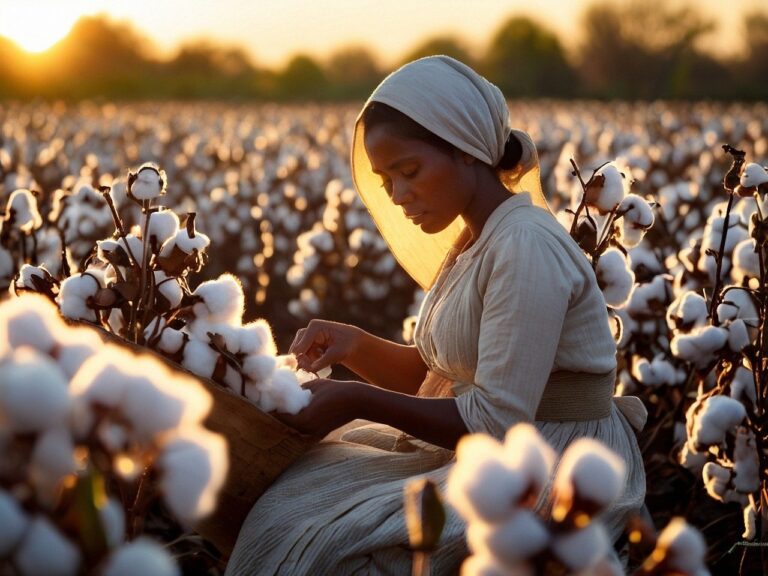Unpacking Black self-hate

Afrocentric Blacks have largely embraced the black self-hate argument and points to skin bleaching in Jamaica which has a prevalence rate of 10 percent based on the most recent Jamaica Health and Lifestyle Survey, and Jamaicans’ fondness for the British royalty as examples of this self-hate. Low self-esteem is a form of self-hate and many scientific studies have been done on Black self-esteem. The popular self-hate argument finds support in the most popular academic work on self-hate, the first known doll study conducted by Kenneth Clark and Mamie Clark in the United States in 1950, despite the historical evidence which refutes it. This well-known work did not measure the self-esteem of the participants. However, the doll study’s finding of self-hate is very popular in Afrocentric discourse.
The researchers in the doll study gave Black and White children Black and White dolls. The children were asked to select the doll that looked like them. The results revealed that nine percent of the Negro children from the north and 18.6 percent from the south made anti-Black statements. Only 14 percent of the children in the total sample made negative statements about Blackness. The researchers (and subsequently Afrocentric Blacks) interpreted the findings to mean that racial segregation in the United States leads to, among other things, feelings of inferiority and low self-worth among Negroes. This argument was a part of the social science statement in support of racial desegregation in the landmark case Brown v. Board of Education.
A close reading of the doll study suggests that most of the Black children did not show a preference for Whiteness. The small minority of the children in the sample that expressed negative attitudes towards Blackness was used to generalize to adolescence and adults in the larger Black population. The actions of Black children in the doll experiment were conflated with the evaluative domain of Black adults’ interior psychology. The Black children who selected White dolls could have been socialized by their parents with a bicultural frame of reference to navigate the American racial landscape and thus the children were displaying early cultural competence with Afrocentric and Eurocentric environmental stimuli. It is possible that the parents taught the children to be nice to and say nice things about Whites in order to navigate White racism. The researchers also ignored the counterfactual because the White children who selected Black dolls were not interpreted as hating themselves. If the Black children who selected White dolls hated themselves then the White children who selected Black dolls should also be seen as hating themselves. Some of the Black children might have also selected the White dolls because of the popularity of these dolls in the society, whereas there were not many Black dolls available. Black children played with White dolls regularly in the 1950s. Even if these Black children selected the White dolls because of the high status associated with these dolls, this does not automatically mean that the children internalized the low status that Whites associated with their racial group. Children are more resilient than people think.
The doll study’s finding was conflated with self-hate with no empirical support. A critical review of the landmark studies in the United States between 1939-1960 and 1968-1980 on the relationship between Blacks’ personal self-esteem (the evaluative trait of personal identity) and racial self-esteem (the evaluation of one’s racial group) indicate that personal and racial self-esteem are related as important parts of the self-concept, but these two components of the self are not correlated. This finding suggests that a person can love his or her race (have high racial self-esteem in the social identity domain) but have low self-esteem (a form of self-hate in the personal identity domain), and a person can have high self-esteem and hate his or her racial group. Therefore, equating Black children’s “rejection” of a Black doll in an experiment with negative personal evaluations of the self (self-hate) and low evaluation of the Black social self (racial self-hate) are spurious at best and unscientific at the worst. Blacks who display the greatest public regard for their race, sometimes, ironically, suffer from self-hate.
The self-hate thesis and the methodologically flawed doll study are pervasive, as exemplified in Kiri Davis’ film, A Girl Like Me, despite the critique of the self-hate thesis with the available counter evidence. Davis was an 18-year-old filmmaker from New York who, reportedly, replicated the famous doll study. Davis interviewed 21 Black children in a New York day care facility. The film starts with the narratives of some African-American teenage girls explaining the privileges accorded to light skin and Caucasian physicality in the United States. Two of the teenage girls cited skin bleaching as the outcome of light skin privileges in society. This scene was followed by others with some of the 21 children from the replicated doll study. The film, which was 7.16 minutes, reported the findings of the study. Some of the Black children in the scenes selected the White dolls as the nice dolls. These children also stated that the dolls were nice because they were White. The children were also shown selecting the Black dolls as the bad dolls and declaring that the Black dolls were the dolls that looked like them. The study found that 15 of the 21 children preferred the White dolls. The film ended with the teenage girls who were at the start of the film bemoaning their miseducation.
Davis arrived at the same flawed conclusions as the Clarks, decades earlier, that the Black children hated themselves. In the film, the teenage girls’ narrated experience of colorism and miseducation, both of which influence behavior (including skin bleaching), were ignored in favor of the self-hate explanation. The public’s fascination with psychological damage continues because Davis’ film was reported on by the major media houses in the United States including the Cable News Network (CNN) which is a very popular cable channel, globally. The film has received millions of views on You Tube. The oppressed are impacted by racism and discrimination in terms of social, economic, political and health outcomes but not in terms of mental pathology, as the self-hate thesis asserts. In the United States, for example, racism continues to impact the physical health of Blacks in terms of hypertension, stress and doctors’ recommendations for cardiac catheterization and so on but not their self-esteem.
The huge body of self-esteem research conducted in the United States also refutes the self-hate thesis among Blacks. The findings from some of the self-esteem studies are reported below. Blacks and Whites have equivalent levels of average self-esteem over time. A meta-analysis reveals that Whites have lower self-esteem than African-Americans but higher self-esteem than other minorities such as Asians, Native Americans and Latinos. African-American children are less likely than Euro-American children to allow other people’s perception of their racial group to influence their personal self-esteem. These findings corroborate the earlier findings that Blacks and Whites have comparable self-esteem. Blacks have a robust self-esteem advantage over Whites. This advantage exists because Blacks, unlike Whites, do not base their self-esteem on the approval of others.
Moreover, research on Black children’s self-esteem and racial self-esteem that use black-white puppets, pictures and dolls are problematic because they are not psychometric tests. It should be noted that doll studies do not indicate personal or racial self-esteem because preschoolers do not comprehend the biological and the socially constructed meanings of race. In addition, the children have not yet developed global self-esteem so it cannot be measured.
Christopher A.D. Charles Ph.D. is a Professor of Political and Social Psychology at the University of the West Indies, Mona







Your argument is filled with contradictions, misconstrued claims and blatant lies! First “racial self-esteem” and “personal self-esteem” are directly related concepts that influence each other. As the individual’s behavior, self concept or personality is shaped through his experiences and relations to others. Hence, the self is not an individual achievement but occurs within a system of human social relationships. So when you live in a system dominated by whites which seeks to control the definition, experiences and social relationships of Blacks the breeding of self hate in the black population is inevitable and works to that system’s advantage. Therefore, to claim “racial self-esteem” and “personal self-esteem” are two separate concepts is an erroneous calculation as the individual’s self concept is shaped by the environment in which he lives. In other words, his “personal self-esteem” is formed by his “racial self-esteem”, you cannot have pride in yourself and not your race as your race is an unavoidable characteristic of your physical appearance.
You state that the doll study was faulty because “The Black children who selected White dolls could have been socialized by their parents with a bicultural frame of reference to navigate the American racial landscape and thus the children were displaying early cultural competence with Afrocentric and Eurocentric environmental stimuli.” The very fact that the children have to be taught to navigate white racism by treating whites with privilege is teaching children self-hate. What this statement is really saying to the child is that whites are superior and deserve better treatment – and in order to get by in White Racist Amerikkka one must then deny their blackness and be nice to whites.
White children who selected black dolls cannot be seen in the same way as black children who selected white dolls for the very reason that white is the dominant power structure. The white power structure has the power of definition which is very important in how they see themselves and how blacks see them selves. The white children could even grow up and marry blacks and that wouldn’t matter because the power relations between white and black will still remain the same. So the white child can choose whichever doll it wants, his father still has power and will teach him how to maintain that power when he grows up. The black child on the other hand, who is taught to deny his blackness will be taught self-hate and powerlessness.
In the film, A Girl Like Me the study found that over 50% of the black children preferred white dolls over black dolls which is a clear indication of the pathological self-hate plaguing black people! You stated “the teenage girls’ narrated experience of colorism and miseducation, both of which influence behavior (including skin bleaching), were ignored in favor of the self-hate explanation.” What a crime to Black people everywhere! Your article and your phd should have been retracted immediately upon making that statement but I guess those achievements are in place to maintain white domination and are not in service of black people. So-called “colorism” and miseducation is a direct form of self-hate, where one is taught to associate niceness and beauty with whiteness and ugliness and all things bad with blackness. Hence black children are taught to deny, dislike,destroy or radically reconstruct their blackness (through bleaching, relaxing their hair, dying it blonde, etc.) so that they deceptively alter their self-perception as being more acceptable or to avoid rejection by others.
You then went on to sink the nail further in the coffin by stating “African-American children are less likely than Euro-American children to allow other people’s perception of their racial group to influence their personal self-esteem” It seems the lies just grow from your nose. Well that is one of the contradictions we as blacks must be faced with under white domination, we must see the truth as lie and the lie as truth. However, if that statement was true then why are so many blacks practicing self-hating behaviour? Why are they bleaching (even bleaching their children 6 years old and younger), putting in hair to look white, worshiping a white Jesus, enriching white folks by preferring to spend with them on so- called “name-brands”? Why do they hate and demonize everything African? Why do blacks kill each other in the streets at such an alarming rate? Why? Why? Why?